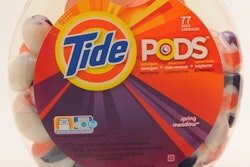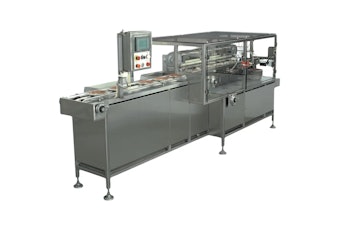So you need to develop and commercialize a new flexible, semi-rigid or rigid composite package that incorporates one or more films. How do you get started with the process of deciding what film or films to use or include in the structure? Plenty of polymers and film production methods are in common use in the industry; a basic understanding of the choices available and the strengths and weaknesses of different approaches can simplify the selection process and get you moving faster towards a good solution.
Use this playbook as a resource to get you started down the road of developing competence in film selection and as a review point to check that you’ve considered the right criteria and options.
We’ll start with an overview of the broad types of functions polymer films can provide; move to specific quantifiable attributes that relate to those functions; review the main categories of polymers used in films, highlighting the most common workhorses used in packaging; and describe the film production methods and why each has its place. This will provide a look at the basics of an area of technology that is fundamental to the flexible packaging industry, has application to some semi-rigid and rigid packages, and affects every consumer who purchases packaged goods.
Before even starting to think about polymers and production options, it’s important to first know what to focus on.
The goal is to specify the attributes or properties that matter in converting and end use for film structures that work in such a way that the supplier can make satisfactory structures consistently and efficiently and that the converter and end user receives materials that consistently meet their needs at a cost appropriate for the use.
Let’s break down the essential elements of this goal so they guide us in our choosing and specifying activities, remembering that this is not an exercise in choosing just a couple of elements; this is a coherent, integrated approach that needs all elements in place to succeed:
1. Specify what matters. Specify means quantifying, and this is critical as both a guide for the supplier, and as a means for the user to ensure they get what they need, want and expect. Focusing on what matters means understanding real requirements and not including an attribute or property in a specification just because it can be measured, or you saw it in another specification.
Opening the door to specifying things that don’t matter leads to increased cost, for all parties involved. Failing to include things that matter opens the door to surprises, failures in converting or use that lead to increased cost, also for all parties. There is a thinking person’s balance to be struck here, and some leeway in judgment, but realize that neither extreme (excessively complex or excessively simple specifications) efficiently serve all parties’ needs in the end.
2. Specify what works. A solid understanding of real requirements leads to being able to match up film options in a robust manner. Where lots of experience exists (i.e., sealant layer X provides consistently strong seals on your VFFS lines at needed filling speeds), leverage that knowledge to simplify the process, adjusting other aspects of the film to meet the unique requirements for the specific application.
If you are heading into uncharted territory for either the supplier or user, take the time to test and understand the limits of satisfactory performance; you’ll save time and money for everyone in the end. A beautifully formatted specification that describes in detail a film construction that doesn’t work is worse than useless; it runs the risk of misleading everyone as to what film to use.
3. Specify what the supplier can make consistently and efficiently. Very few, if any situations can tolerate high rates of unacceptable material; mismatches between a film specification and a supplier’s capability only serve to drive up costs and put at risk the smooth flow of the value chain. The user has the responsibility to describe what they understand to be their requirements (see above), and the supplier has the responsibility to accurately represent their capability to consistently and efficiently make the film.
Identifying a potential mismatch may lead to a productive conversation in which ‘what matters’ can be refined, leading to better supplier capability, the realization that other suppliers may have the needed capability already in place, or an agreement that it will take time for any supplier to move up the learning curve to meet the needs. Keeping a mismatch a secret is a dangerous practice that all too often comes to light at the worst possible time.
4. Specify what can be delivered at appropriate cost. Value of a film structure only can be set in the context of the end use. High value goods with high failure costs can justify more costly, higher performance packaging to ensure secure and fully functional delivery to the end user. For lower value commodity goods where consumer or industrial end customer switching costs are small to nonexistent, the critical need for cost efficiency drives the selection to lower package performance and overall cost-in-use.
Drive to the best outcome for all by using the overall or total cost-in-use mindset. Invoice price of the film structure is only one component; carefully examine and understand all the places where the performance of that structure impacts cost. You’ll determine accurate cost- in-use and make much better decisions. Industry veterans can relate cases where bulking up a sealant layer slightly resulted in increased film cost that was more than offset by a reduction in incurred costs associated with seal failure in terms of downtime, lost product and, in the case where the system is constrained by filling capacity, lost sales to the end user. Cost-in-use applied smartly avoids the “penny wise, pound foolish”trap that comes from too simplistic a view of procurement of films.
To be sure, the natural tension around price between supplier and customer is present in film choice and specification. Suppliers appropriately seek to be realistically rewarded for quality, service, innovation and reinvestment, while customers understandably seek consistent quality, security of supply and competitive, predictable costs. In the long term, “you get what your pay for” and “you get paid for what you deliver” generally holds true even though short term shifts in the balance between supplier and customer may seem to distort the equation.
The real bottom line here is profound—poor film choices and specifications subvert the supply relationship, resulting in higher costs for both parties.
The author specializes in flexible packaging, and has spent 30 years leading package development at several prominent packaging converters.






















